Naval College Exterior
In 12 years of engineering practice, I’ve experienced a range of projects. As budding engineering students in college, we might think our careers will be spent designing the next Burj Khalifa, Three Rivers Dam, Tacoma Narrows Bridge, or Century Link Stadium. In reality, our careers will likely be spent designing buildings of a slightly smaller scale. At the very least, we will soon be immersed in designing new buildings with all that stuff we learned in school, right?
Sure, I’ve had a few of those, but much of my practice has been dedicated to one of those many subjects you don’t learn about in school – seismically upgrading existing buildings. And I’ve learned over my not-so-long career that retrofitting existing buildings is often more challenging than new building design, and requires more technical expertise and artistic ingenuity to successfully transform an old building into a new one. By comparison, the average new building can be quite easy to design. And unlike a new building, an old building often has the challenge of not making it look like it was modified to be something it wasn’t originally.
A prime example is the recently completed Naval College at Naval Base Kitsap (NBK) – Bremerton. The three-story building was originally a WWII era hospital identified by record drawings as the “Sick Officers’ Quarters” and included two “Psycho Rooms” – not exactly politically correct today. These titles illustrate from a non-engineering perspective the challenges of working on old buildings. Usually built in a different era, engineers, architects, contractors, and skilled craftsmen didn’t design and build them like we do today. Working on these buildings effectively requires developing a whole new mental library of terminology, materials, and types of construction. In short, throw out the latest and greatest in your current codes and design standards, because they won’t help much.
The seismic upgrade for the future home of the Naval College required a different set of building construction knowledge and approach to designing the structural systems than for a new building. In a case like this, instead of having a blank canvas to draw whatever you want, you have to work within the picture given to you. The design team had to take this literally because the building was a WWII-era structure and therefore had historical preservation restrictions on its exterior appearance. Luckily, this was one of those rare upgrade projects where the entire building was being gutted and modernized, so the inside was at least a blank canvas…once you work around the floor systems, columns, immovable exterior walls, etc. Okay, so even a gutted building isn’t a blank canvas.
As was typical for this era, the building was constructed of unreinforced masonry (URM) exterior walls with a wood-framed roof. Having worked on a number of similar historic school buildings just prior to this project, I was surprised to find the gravity system (in other words, structural components resisting gravity loads) was actually a steel skeleton with reinforced concrete floors and a robust reinforced concrete basement. My enthusiasm was short-lived as I learned that the skeleton was also embedded in the exterior walls, effectively reducing the would-be shearwall lateral system to a URM infill system, which gives the building very little strength. Since the walls were generally perforated with large windows, that further reduced the building into a heavy steel-framed post-and-beam system, which is generally a gravity system with no effective lateral strength.
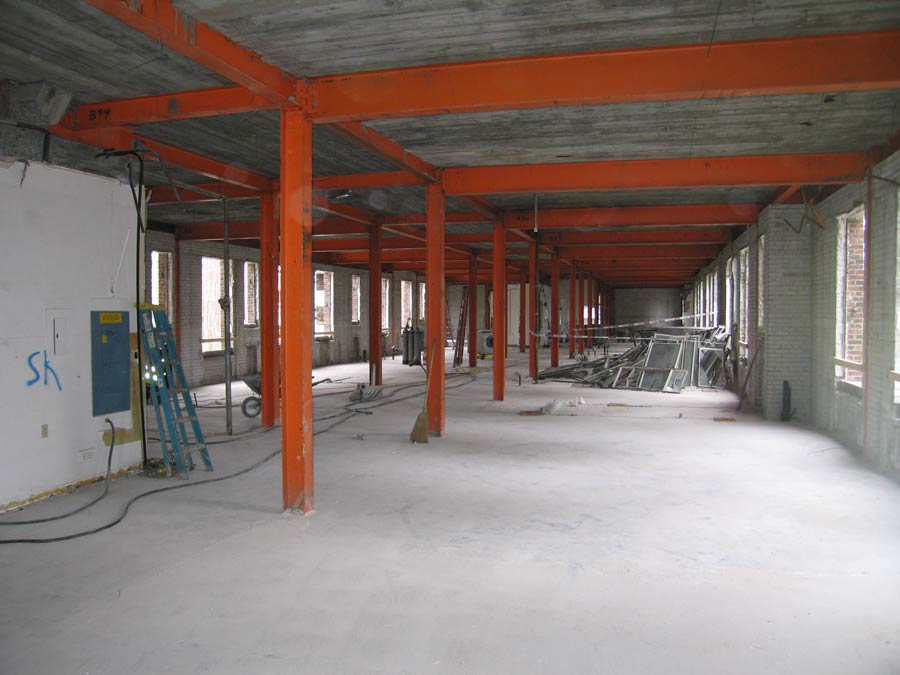
So, we have a heavy building with no lateral system, exterior URM walls that want to fall out of their frames if properly motivated in an earthquake, and I have to work from the inside where I have to negotiate concrete floors, existing foundations, and steel framing. Well, at least the building is gutted, right? No, the ultimate goal is still a modernized, functional college, so I’ve got the architectural layout and all the mechanical, electrical, and other systems to contend with in addition to not being able to put my structural system where I want to because, well, there’s already a structural system there too. And remember, older buildings weren’t designed to accomodate space for today’s non-structural systems. So what’s a creative engineer to do?
Ultimately, the base solution was a not-so-novel addition of new concrete shear walls (walls composed of braced panels). But to weave those walls in brought back the creativity. The biggest challenge with upgrading this kind of structure is connecting the new concrete walls to the existing structure, especially concrete floors. Concrete is typically poured monolithically to interlock the intersecting reinforcement bars of floors, beams, and columns. Also, dragging the heavy seismic loads from the floor systems into the walls is usually helped by adding additional reinforcement in the slab interconnecting it to the walls. So how do you connect brand-new concrete walls to an existing concrete floor?
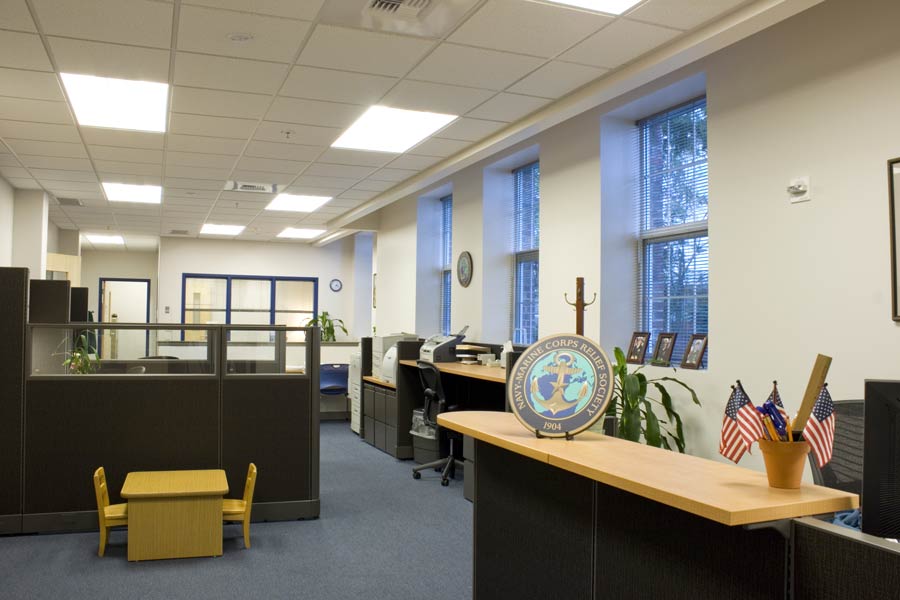
The structural design included a combination of shotcrete walls (concrete placed via spray method) overlayed on the URM walls and interior cast-in-place (CIP) walls (fluid concrete placed with forms). Shotcrete walls were used against the URM walls because CIP concrete is flowable and places high pressures on the masonry walls that would push them out of their steel frames. The design was finessed to fine-tune wall lengths and thicknesses and even reduce the number of walls moving up the structure to allow large open rooms at upper levels. The exterior walls lining URM walls also provided stability to support the masonry. Other masonry walls were supported with strongbacks (framing placed to support the walls) constructed of metal studs and plywood paneling.
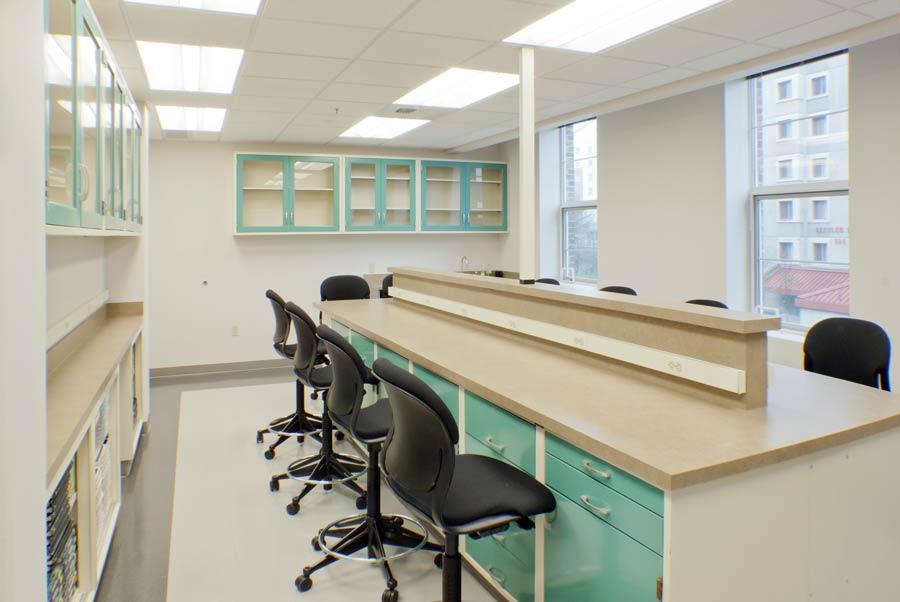
We used several different approaches to interconnect the new walls with the old floors. In some places, the floors were completely chipped out except for the reinforcement. Wall reinforcement was passed through the openings and the intersecting bars cast together monolithically. In other locations, walls were cast tight to each side of the floor slab with vertical bars passing through cored holes in the slab. As for dragging heavy loads into the walls, steel drag struts were fitted between the steel floor framing, and the struts clamped together through the beams and to the floor slab.
A number of other structural improvements were made in addition to the new lateral system to convert the old hospital into the new Naval College. Of course, at the completion of the project, most of the structural work was ultimately covered up, never to be seen or appreciated, at least not directly. The proof of the work was in finding a solution to upgrade the building while (at least for this project) hiding it from view and not interfering with the architectural goals of creating the facility the Naval College desired. The final product – an old building that looks like it was newly built.
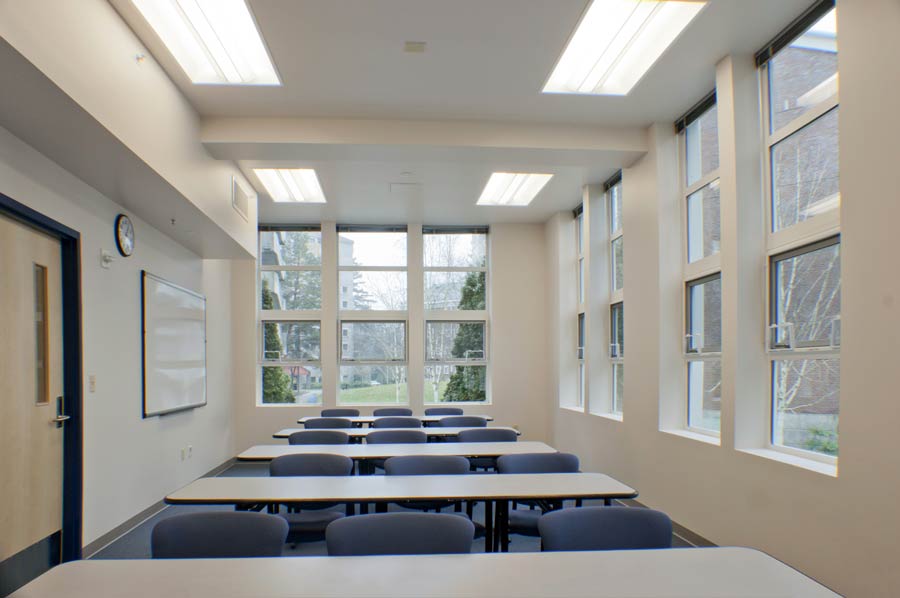

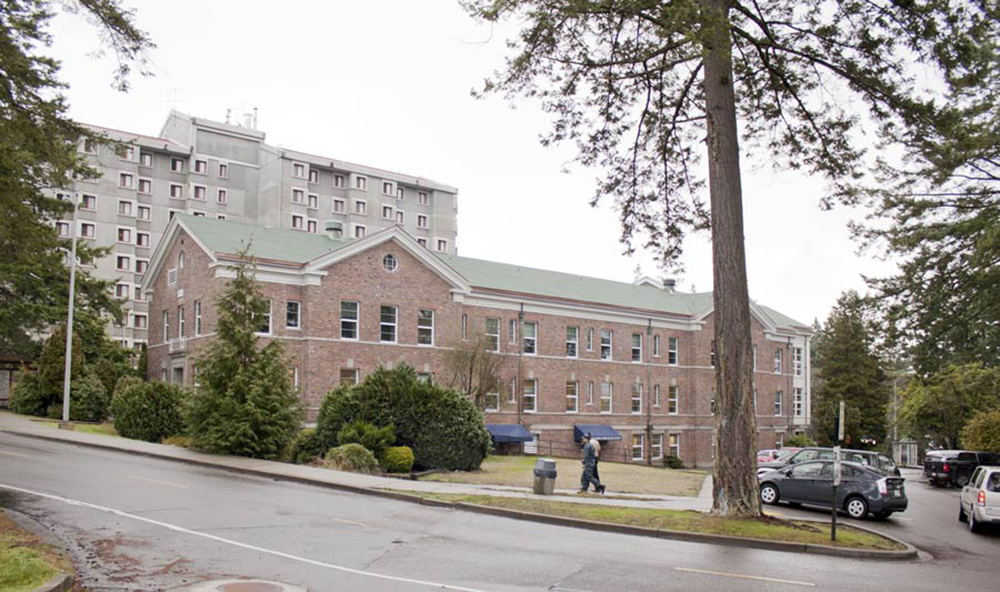
Comprehensive article; a good read, though seismic upgrades are not something I have much to do with in Au
[…] The hospital is a three-story structure with a basement that “daylights” to the west. The architecture is that classical red brick federal style that reminds me a lot of all the neat old brick buildings I encountered at Ft. Belvoir in Virginia during my Officer’s Basic Training. The SHPO had a keen interest in seeing the exterior appearance modified as little as possible, while realizing that significant changes would be made in the interior to make it safe and suitable to house the Navy College, the Navy-Marine Corps Relief Society, and the offices of the Base Chaplain. You can read more about this project in a post by structural engineer, Drew Martin. […]